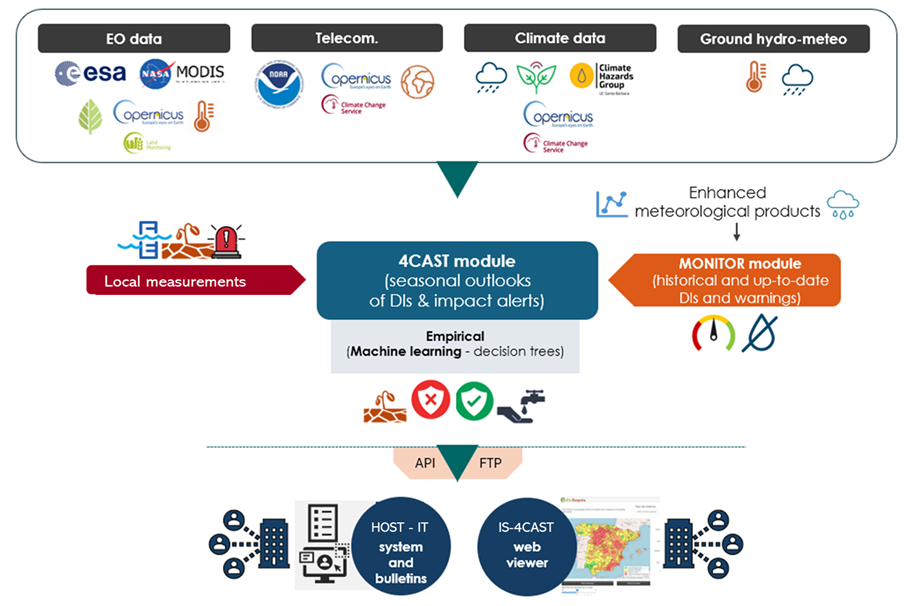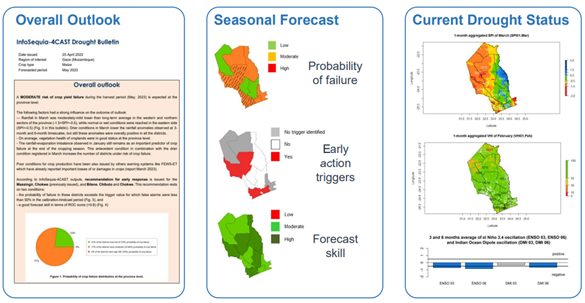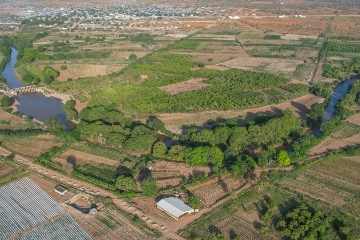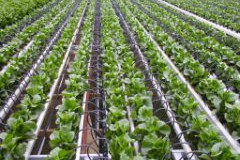
Introduction
Water scarcity is an escalating global crisis, affecting economies, ecosystems, and communities worldwide. Conventional drought monitoring systems often rely on delayed, reactive measures that fail to mitigate the severe impacts of drought on water resources, agriculture, and livelihoods. The lack of timely, actionable insights leaves decision-makers poorly equipped to anticipate challenges, perpetuating cycles of vulnerability.
This pressing need for proactive, precise, and impact-focused solutions inspired the development of InfoSequia, a groundbreaking tool designed to reshape how drought is monitored, forecasted, and managed.
InfoSequia is a cutting-edge system combining state-of-the-art satellite remote sensing, advanced data analytics, and machine learning to deliver real-time drought monitoring and impact-based seasonal forecasts. It empowers governments, water managers, and humanitarian organizations with precise, locally specific insights to make timely and informed decisions, mitigating drought impacts effectively.
How it works
The core of InfoSequia lies in its integration of historical and real-time satellite observations with climate variability indices. Using the Fast-and-Frugal Tree (FFT) machine learning algorithm, the tool generates easy-to-interpret seasonal outlooks and alerts for critical drought impacts, including:
- Crop yield failures at the agricultural district level
- Water supply shortages, offering 3–6 month predictive insights
The FFT framework uses predictors such as climate, vegetation, and atmospheric conditions to classify drought severity, offering users robust, locally tailored forecasts.

Key features
- Impact-based forecasting: Seasonal outlooks for water supply and crop yield failures, updated monthly
- Actionable real time alerts tailored to the region of interest
- Multi-sensor integration: Combines robust drought indices with climate variability patterns for contextualized insights
- Simple yet accurate decision-making: Powered by intuitive decision trees for ease of use
- User-friendly dashboard: A sophisticated web-based platform for visualizing historical, real-time, and predictive data
- Relevant information available in bulletins for dissemination (Figure 2)
- Capacity-building through eLearning: Access online training via the FutureWater Academy to empower users with self-sufficient, in-house expertise


Unlike traditional drought monitoring systems, InfoSequia focuses on local specificity and actionable insights, addressing the unique needs of its users:
- Water managers: Mitigates delays in detecting supply-demand imbalances, enabling strategic actions like optimizing allocation and reducing consumption
- Humanitarian organizations: Provides precise, district-level insights into crop yield failures to support cost-effective interventions and policyholder arrangements
- Decision-makers: Delivers accurate forecasts over longer, actionable timeframes, enabling anticipation of future conditions
InfoSequia isn’t just a tool; it’s a long-term solution with regular updates, technical support, and tailored training. By aligning with digital transformation trends, it offers user-friendly accessibility while enhancing FutureWater’s portfolio in drought monitoring and water resource management.
Through innovation, strategic foresight, and user empowerment, InfoSequia sets a new standard in drought forecasting, paving the way for a sustainable and resilient future.
Video
Related projects
-
I-DIP: Monitoring, Forecasting and Tackling Flash Droughts in Pakistan
Regions in Pakistan are increasingly exposed to flash droughts – sudden dry spells that develop within weeks and severely impact crops and livelihoods. To strengthen resilience, FutureWater and WaterSprint, in partnership with the National Drought Monitoring Centre (NDMC) and the Better Cotton Initiative, are piloting I-DIP in two vulnerable districts:Bahawalpur...
-
Drought Forecasting Model for Somalia/Somaliland
This project aims to strengthen drought preparedness and response in Somalia and Somaliland by enhancing the technical and operational capacities of the Somali Disaster Management Agency (SODMA) and Somaliland’s National Disaster Preparedness and Food Reserve Authority (NADFOR). Led by the World Food Programme (WFP), FutureWater and Galayr will work on...
-
Megadroughts in Europe’s Watertowers – From Process Understanding to Strategies for Management and Adaptation
Megadroughts are rare and poorly understood hazards. They are defined as exceptionally severe, multi-year, prolonged (>5 years) periods of drought that impact severely large areas and different sectors of the economy and the environment (Cook et al., 2022). They are generally caused by the concurrence of extreme events of dryness...
-
InfoSequia-4CAST: Forecasting and Quantifying Risks of Crop and Water Supply Failures Using Machine Learning and Remote Sensing
InfoSequia-4CAST combines historical and up-to-date observations of satellite-based meteorological and agricultural drought indices with climate variability indices, to generate seasonal outlooks of water supply and crop yield failure alerts. These impact-based indicators are computed using a simple, robust and easily understandable statistical forecasting-modelling framework. By making use of multi-sensor, state-of-the...
-
HERMANA: Tool for Integrated Water Management
HERMANA aims to foster the development of an integrated water management decision support system (DSS) that supports daily, tactical and strategic decision-making related to water resources in Colombia, and specifically in the Cauca Valley Basin. The HERMANA tool will be a comprehensive system able to provide valuable, relevant, and reliable...
-
BRIGAID: BRIdging the GAp for Innovations in Disaster resilience
BRIGAID (BRIdges the GAp for Innovations in Disaster resilience) aims at developing a new tools to bring climate adaptive innovations to the market. FutureWater contributes in two ways: it coordinates the work package on Droughts which performs and extensive stocktaking, testing, and business development process for a large number of...










